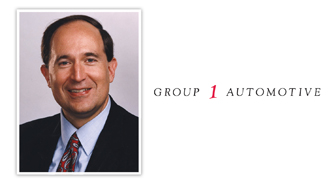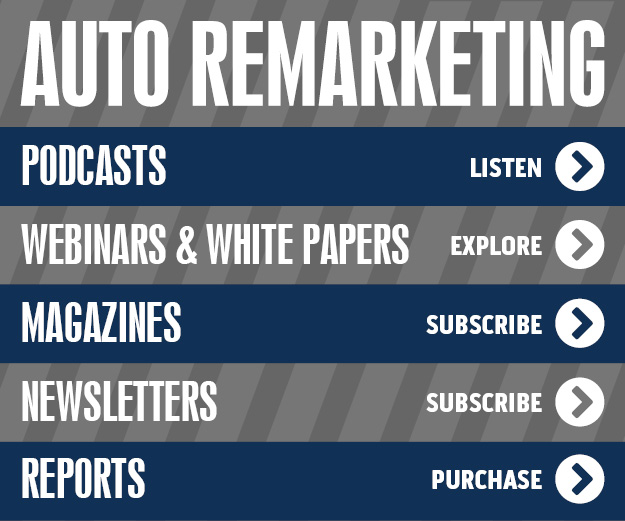Robust Used Sales for Dealer Groups in 2Q, but is Used Price Decline Ahead?

Reporting second-quarter earnings on Tuesday morning, three of the country’s largest dealer groups — Asbury Automotive Group, Group 1 Automotive and Sonic Automotive — enjoyed lifts in their used-car operations from a year ago, helping all three succeed in an auto environment that was limited due to the Japanese disasters.
Automakers are starting to fully recover from the earthquake, but interestingly enough, with the pent-up demand from the production shortages expected to push greater new-car sales soon, one of the group’s executives believes used-car pricing might actually soften.
“Knowing that there is a great deal of pent-up demand to purchase new vehicles, we continue to expect sales to build in the back half of the year, driving full-year 2011 unit sales into the 12.5 to 13 million unit range, in line with industry expectations,” said Group 1 president and chief executive officer Earl Hesterberg during the company’s quarterly conference call on Tuesday morning.
“Used-vehicle sales are stable, but if the new-vehicle selling rate improves, we do expect to see used-vehicle pricing soften,” he stated.
When asked by a call participant to explain his thoughts a bit further in light of others’ expectations that used prices will remain high, Hesterberg stressed: “I think your general assumption that rising new-car prices and lack of new-vehicle inventory has supported the record used-car prices is completely valid.
“Used-car values on the calendar basis usually peak in March. This year they peaked in June. But of course, June was getting near the time of peak inventory shortages, particularly for those Japanese brands,” he continued. “But we saw this most recent month of 3 or 4 percent on some of the smaller that were probably up about 14 percent year-over-year.”
Furthermore, the run-up and subsequent easing of fuel costs will likely have some impact, as well. When gas prices hit their peak of $3.99 earlier this year, it led to some compact and midsize used-car prices going “through the roof,” Hesterberg noted. He cited the used Honda Civic and Toyota Corolla as examples.
“Those have started to cool off already. I think when new Camrys and Corollas are being aggressively marketed on the new-car side again, in the coming month … I think that has to put downward pressure on used-car prices,” he added. “Now that’s not necessarily coming from historical prices, that’s from current prices and the prices we’ve had.
“But of course we have to be concerned because we buy cars every 30 to 60 days and turn them, so we have to be very careful about declining values,” Hesterberg added.
Pricing trends aside, the news coming out of this trio of dealer groups on Tuesday was fairly positive overall, on the used-car side, in particular.
Sonic Automotive
Sonic, for one, notched its best-ever quarter for used retail volume and used gross profits during the period. The retailer is also “well on the way” to achieving its goal of averaging 100 used sales per month, the company said during its earning conference call.
Some Sonic outlets are seeing as many as 200-300 used sales per month, and most of the group’s dealerships are selling above the industry average for used sales.
In June, Sonic stores were, on average, moving 82 used vehicles per month, with 25 stores having an average of at least 100 used sales/month.
During the second quarter, Sonic sold 27,141 used vehicles, up 11.3 percent year-over-year and marking the best-ever quarter for this metric. Used gross profit climbed 5.3 percent to reach the record level of $39.56 million.
When asked during the conference call about the significant gains in used sales, executive vice president of operations Jeff Dyke said: “It’s pretty simple. It’s low turnover and execution of our playbooks.
“We’ve just got a great, great used-car team. We’ve all been together for a decade, and the execution of our processes and no turnover and the culture we have in our stores is really generating our value growth,” he added.
Moving on to look at the retailer’s overall quarterly results, Sonic achieved net income of $21.35 million, up from $8.44 million in the year-ago period.
Income from continuing operations was $22.15 million, compared to $9.59 million in the second quarter of 2010. The year-ago sum includes $7.3 million in pretax charges dealing with various debt refinancing transactions during that period.
When the charges are taken out of the picture, Sonic’s income from continuing operations still climbed 59.1 percent.
Total revenues came in at $1.97 billion, up from $1.72 billion in the second quarter of 2010. Used revenue jumped 15 percent to $536.2 million, the ninth straight quarter it has shown a double-digit increase, the company said.
Meanwhile, new-vehicle revenue totaled $1.04 billion, up 16 percent year-over-year.
Additionally, parts and service revenue saw a 6-percent year-over-year gain and F&I revenue increased 22 percent.
“The higher margin segments of our business continue to benefit as our new- and used-vehicle business continues to gain market share,” Dyke noted. “We look forward to introducing more advanced stages of some of our core operating playbooks in the near future to further capitalize on the work we’ve done to roll out predictable, repeatable and sustainable processes to our dealerships.”
Sonic president Scott Smith added: “Our focus on creating predictable, repeatable and sustainable processes is proving to be a sound model. Growing our base business continues to produce strong results. Our new and used volume both grew by double digits despite the challenge of lower Japanese brand inventory levels.
“We are seeing the benefit of our operating playbooks in every area of our business as we continue to outperform the industry,” he continued. “We will continue to focus on organic growth in our base business, converting leased properties to owned properties and opportunistically reducing our debt.”
Looking forward, Smith stressed: “We expect growth in the automotive retailing sector to continue over the second half of the year, and we remain comfortable with our full year continuing operations earnings target of $1.18 – $1.28 per share.”
Group 1
Over at Group 1, although the number of used vehicles sold fell 2.4 percent to 25,694, the retailer enjoyed revenue increases for both used retail and used wholesale sales.
This occurred during a period where Group 1 achieved its strongest second quarter on record for earnings per diluted share ($1.06). Not only did earnings per share mark the best second quarter, it was the second strongest of any quarter ever for Group 1, which also celebrated second-best quarter of all time for pre-tax income ($39.7 million).
The pre-tax income figure is an 87.9 percent improvement over the year-ago period, and the gain in net income was even stronger.
Group 1 pulled in $24.7 million in net income, which is up 93.3 percent year-over-year.
Revenues came in a $1.5 billion, up 3.9 percent year-over-year. Used retail revenues jumped 3.8 percent and reached $353.05 million, used wholesale revenues improved 8.9 percent and totaled $60.61 million and new retail revenue climbed 3.1 percent, hitting $809.88 million.
Group 1 saw a 5.2-percent increase in parts and service revenue ($204.09 million), while F&I was up 8.8 percent at $46.52 million.
“Despite an industry SAAR nearly 1 million units below the first quarter and severe supply shortages in the 62 percent of our business normally represented by Japanese brands, Group 1’s operating team turned in one of the best profit performances in our company’s history,” shared Hesterberg.
“We were able to generate revenue increases in every business segment, significantly increase our new and used vehicle margins and maintain strong expense controls in a constrained vehicle sales market,” he added.
Asbury
Moving along, Asbury also made great strides in its used-car operations, as its overall used revenue came in at $322.7 million, up 15 percent year-over-year.
Used retail revenue climbed 22 percent, while used wholesale revenue dipped 12 percent. Asbury sold 14,280 used vehicles, a 22-percent increase.
The company’s net income came in at $14.2 million, up from $12.8 million in the second quarter of 2010. Adjusted income from continuing operations reached $16.8 million, compared to $13.1 million in the year-ago period.
Overall revenue totaled $1.1 billion, a 9-percent improvement.
On the new-car side, revenue was $578.3 million, up 5-percent year-over-year. The company sold 18,127 new vehicles, a 2-percent hike.
F&I revenue improved 20 percent, officials noted.
“Once again, Asbury is pleased to announce double-digit growth in adjusted EPS from continuing operations, proving both the resiliency of our business model and the agility of our company,” stated Asbury president and CEO Craig Monaghan.
“We produced these excellent results through a dramatic 70-basis-point improvement in our new vehicle margins, achieving a company record used-to-new ratio, and setting a company record increase in finance and insurance profit per vehicle retailed,” he continued.
Moving along, Asbury executive vice president and chief operating officer Michael Kearney offered some perspective regarding where the company stands in the aftermath of the Japanese earthquake.
“We are encouraged by the speed and efficiency with which our Japanese manufacturing partners are restoring production capacity and admire their dedication. Our Japanese dealerships are experiencing the impact of inventory shortages; we anticipate that our affected inventories will bottom-out in July or August,” he noted.
“We believe our third-quarter earnings could be adversely impacted in the range of $0.05-0.10 per diluted share as a result of disruptions in the market,” Kearney added.
“Our results will depend on, amongst other things, SAAR, when production reaches normalized levels, and when we are able to receive a more favorable mix of product at our dealerships. We believe this will be a short-term issue and expect much healthier inventory levels heading into the fourth quarter,” he concluded.


